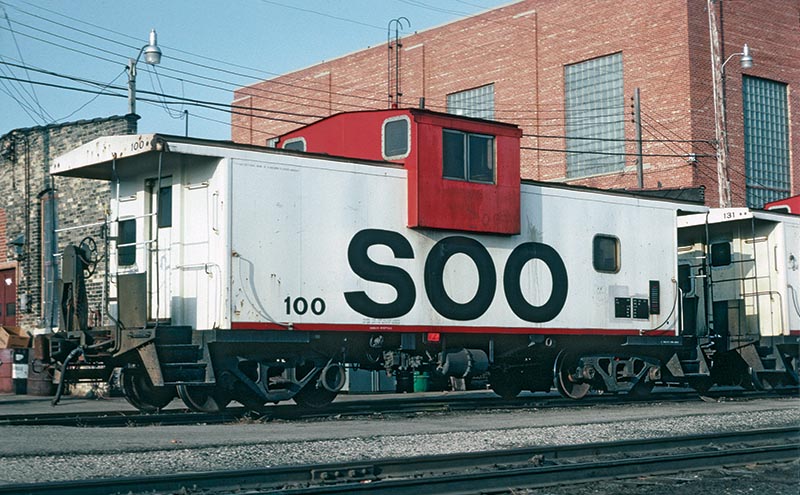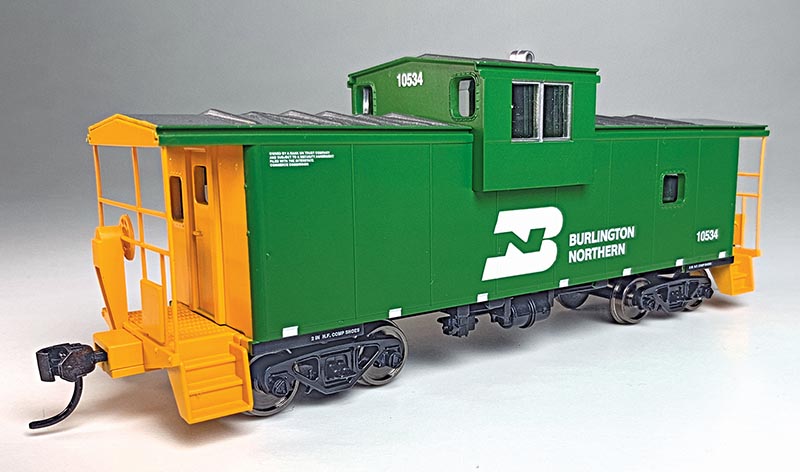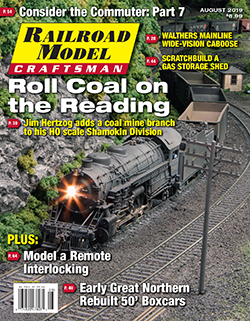 Review by Harry K. Wong/photos by the author except as noted
Review by Harry K. Wong/photos by the author except as noted
To rail enthusiasts and to the general public alike, cabooses need no introduction. Popular in children’s storybooks and persistent even today in contemporary culture, the railroad caboose has earned its place as a key icon of American railroading. Of course, cabooses were not constructed solely to become the subject of children’s lore, but rather to serve several important functions as part of a train. Prior to their obsolescence by the late 1980s due to the introduction of portable electronic telemetry devices, cabooses fulfilled several important roles, among them to act as the office and quarters for conductors and brakemen, and to provide a safe observation and riding platform from the rear of a freight train.
As freight cars grew in height during the 1960s, it became apparent that standard cupolas could no longer provide the forward vision needed by rear end crews to watch over the train. A wider cupola as seen on the ICC Extended Wide Vision Caboose became an attractive option for those roads who preferred cupola cabooses.
Walthers has recently released an all-new rendition of a modern extended wide-vision caboose as part of their mid-range WalthersMainline series of HO-scale rolling stock. This model is comprised of styrene components including clear plastic window glazing and separately applied details for the smokejack, end railings and brake wheels. 33-inch metal wheels are mounted inside plastic one-piece trucks screwed to the underframe. The Kadee-compatible knuckle couplers are molded in plastic with copper knuckle springs. A basic representation of ABD brake gear is also mounted to the underframe.

Soo Line caboose 100 at North Fond du Lac, Wis., January 1983. — Kevin EuDaly collection
This caboose weighs 3.5 ounces, precisely meeting the NMRA’s recommended practices for weight for a car of this length. All wheels and couplers were also in conformance with NMRA standards. For those who prefer, one can unscrew the lid to the extended draft gear at each end, and Kadee #5, #148 and #158 couplers will drop right in to replace the stock plastic couplers.
Comparing against prototype photos, this model is an exact match for cabooses delivered by the International Car Company to the Soo Line Railroad in 1973. As with its Soo prototype, apart from the cupola, the model features a roof comprised of seven panels without running boards. Four roof panels bear Stanray X-panel corrugations, while the remaining panels are smooth. This particular pattern, together with the window arrangement on each side, corresponds precisely to two groups of cabooses 56-65, and 66-145 delivered to the Soo Line in 1973 from the International Car Company — ninety cabooses in all.
Our sample painted for Soo Line featured correct as-delivered paint including a bright red roof. However, the thinly-weighted artwork for the large “SOO” lettering and Helvetica road numbers was not a close match to the standard SOO lettering observed in prototype photos. For this initial release, this WalthersMainline caboose is offered in the following additional road names: Burlington Northern; Duluth, Missabe & Iron Range; Conrail; Chessie/C&O; Santa Fe; Canadian Pacific; and undecorated. A single road number is provided for each scheme.

As is customary for most all WalthersMainline rolling stock, this model is not provided with separately applied grab iron details. Instead, a separate detail kit (Walthers 910-201) containing 28 separate metal wire parts for these cabooses is available for an additional $9.98. My only wish would be that axle generator detail for one of the trucks would also be included in this kit.
While there are several renditions of wide-vision cabooses available in the marketplace today, it is important to note that this is the only plastic model to feature squarish instead of rectangular sealed windows on the front and back faces of the cupola and no running boards – both are common specifications seen on many prototype wide vision cabooses constructed in the 1970s, yet something never before offered in an HO-scale plastic model of a wide vision caboose until now.
All things considered, this model is a solid and affordable offering intended for beginning and intermediate modelers, as well as a fine starting point for modification and kitbashing by modelers with more specific requirements. Given its compelling price point, this model ably meets its goals as a smooth and reliable performer, and while not intended to be a precise match for the other paint schemes, the caboose makes for a more than adequate representation for many. It’s good to have solid options like these in the marketplace.
WalthersMainline International Extended Wide Vision Caboose
910-8700 – Undecorated
910-8701 – Santa Fe
910-8702 – Burlington Northern
910-8703 – Canadian Pacific
910-8704 – Chessie/C&O
910-8705 – Conrail
910-8706 – Duluth, Missabe & Iron Range
910-8707 – SOO Line
$34.98 each
910-201 – Caboose Detail Kit $9.95
Wm. K. Walthers, Inc.
5601 W. Florist Ave.
Milwaukee, WI 53218
(800)487-2467




